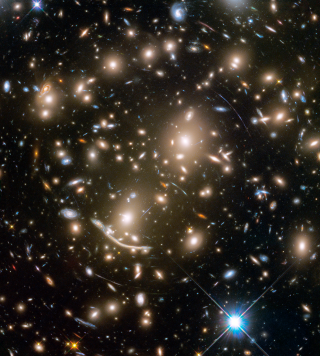Bibcode
Girardi, M.; Mercurio, A.; Balestra, I.; Nonino, M.; Biviano, A.; Grillo, C.; Rosati, P.; Annunziatella, M.; Demarco, R.; Fritz, A.; Gobat, R.; Lemze, D.; Presotto, V.; Scodeggio, M.; Tozzi, P.; Bartosch Caminha, G.; Brescia, M.; Coe, D.; Kelson, D.; Koekemoer, A.; Lombardi, M.; Medezinski, E.; Postman, M.; Sartoris, B.; Umetsu, K.; Zitrin, A.; Boschin, W.; Czoske, O.; De Lucia, G.; Kuchner, U.; Maier, C.; Meneghetti, M.; Monaco, P.; Monna, A.; Munari, E.; Seitz, S.; Verdugo, M.; Ziegler, B.
Referencia bibliográfica
Astronomy and Astrophysics, Volume 579, id.A4, 19 pp.
Fecha de publicación:
7
2015
Revista
Número de citas
54
Número de citas referidas
53
Descripción
Aims: In the effort to understand the link between the structure
of galaxy clusters and their galaxy populations, we focus on MACS
J1206.2-0847 at z ~ 0.44 and probe its substructure in the projected
phase space through the spectrophotometric properties of a large number
of galaxies from the CLASH-VLT survey. Methods: Our analysis is
mainly based on an extensive spectroscopic dataset of 445 member
galaxies, mostly acquired with VIMOS at VLT as part of our ESO Large
Programme, sampling the cluster out to a radius ~2R200 (4
h70-1 Mpc). We classify 412 galaxies as passive,
with strong Hδ absorption (red and blue galaxies), and with
emission lines from weak to very strong. A number of tests for
substructure detection are applied to analyze the galaxy distribution in
the velocity space, in 2D space, and in 3D projected phase-space.
Results: Studied in its entirety, the cluster appears as a large-scale
relaxed system with a few secondary, minor overdensities in 2D
distribution. We detect no velocity gradients or evidence of deviations
in local mean velocities. The main feature is the WNW-ESE elongation.
The analysis of galaxy populations per spectral class highlights a more
complex scenario. The passive galaxies and red strong Hδ galaxies
trace the cluster center and the WNW-ESE elongated structure. The red
strong Hδ galaxies also mark a secondary, dense peak ~2
h70-1 Mpcat ESE. The emission line galaxies
cluster in several loose structures, mostly outside R200. Two
of these structures are also detected through our 3D analysis. The
observational scenario agrees with MACS J1206.2-0847 having WNW-ESE as
the direction of the main cluster accretion, traced by passive galaxies
and red strong Hδ galaxies. The red strong Hδ galaxies,
interpreted as poststarburst galaxies, date a likely important event 1-2
Gyr before the epoch of observation. The emission line galaxies trace a
secondary, ongoing infall where groups are accreted along several
directions.
Based in large part on data acquired at the ESO VLT (prog.ID
186.A-0798).Full Table 2 is only available at the CDS via anonymous ftp
to http://cdsarc.u-strasbg.fr
(ftp://130.79.128.5) or via http://cdsarc.u-strasbg.fr/viz-bin/qcat?J/A+A/579/A4
Proyectos relacionados

Evolución de Galaxias en Cúmulos
Las estructuras en el Universo, a todas las escalas de masa, se han formado de una forma jerárquica y principalmente producidas por fusiones de galaxias. Sin embargo, esta formación jerárquica de las galaxias está modulada por el entorno en el cual se crean y evolucionan. Mientras que las galaxias de campo presentan una evolución pasiva, los
Jairo
Méndez Abreu